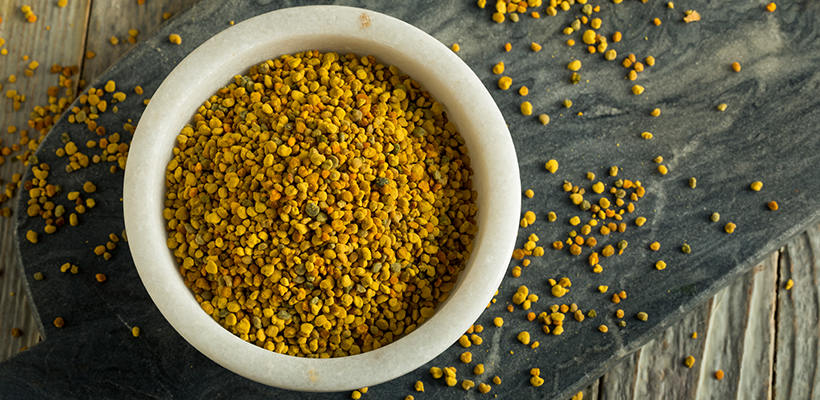
This article was written by Katia Kyriacou, Clinical Dietitian

It is really amazing to read how those little particles of pollen are gathered by bees, but what is even more interesting, is how pollen dust is considered one of the nature’s most complete nourishing foods.
As bees buzz from blossom to blossom microscopic pollen is gathered and carried back to the hive. Pollen is the male seed of flowers required for the fertilization of the plant. Bee pollen is the food of the young bee and it is approximately 40% protein. In the market it is found in raw honey, packed dried or frozen. However, pollen’s nutritional value is best maintained is raw unprocessed honey. Nutritional value of dried or frozen pollen is rapidly lost.
Pollen is processed by the bees for storage with the addition of various enzymes and honey, which subsequently ferments. This type of lactic acid fermentation in honey is similar to that in yogurt, leaving the end product more digestible and enriched with new nutrients.
Although protein content of honey differs depending on the botanical origin, it contains all essential amino acids making it readily absorbed by the body. Carbohydrates are mainly polysaccharides with considerable variations in fiber content, again depending on the botanical origin. Fat content is the least and compromises mainly of unsaturated fatty acids. The main fatty acid is alpha-linolenic acids an omega-3 acid which is an essential fatty acid (it is not produced by the body, only provided by our diet) associated with many health benefits such as decreased triglycerides, improved heart health, immunity and mood.
Small clinical trials with bee pollen have been performed through the years revealing a possible relationship of pollen intake to dyslipidemia, arterial hypertension as well as Duodenal and gastric ulcers. In 2010 Kassaynko et al examined the effect of 40gr daily pollen intake for 12 weeks. Cholesterol decreased by 11.4% and triglycerides by 12.5%. Liferov et al in 2009, treated 57 patients for 45 days with 30gr pollen daily. Cholesterol decreased by b24%, LDL-C by 36%, HDL increased by 2.1%. Ivanova Djarimov, 1993 used honey pollen 3 times a day one hour before meals revealing better results in duodenal and gastric ulcers than controls. However, bigger and better controlled studies are necessary to have more solid conclusions.
The micronutrient content of it is also remarkable, although there is again considerable variation in the levels depending on the pollen type. Generally the main mineral found in pollen is potassium. Phosphorus, calcium, magnesium, zinc, manganese, iron, copper and selenium are also present.
Pollen contains Vitamin E, Vitamin C, niacin thiamine, folic acids and biotin. Significant amounts of carotenoids, mainly β-carotenes (provitamin A) are also present. Vitamin C, Carotenoids and flavonoids contribute to the antioxidant capacity of pollen. The Oxidative stress is thought to contribute to the development of chronic diseases such as cancer, autoimmune disorders, aging, rheumatoid arthritis, cardiovascular and neurodegenerative diseases. An antioxidant slows down or prevents the oxidation to prevent such changes.
Another group of compounds contained in pollen are phytosterols studied for their blood cholesterol lowering effects mainly by partially inhibiting cholesterol absorption. Phytostelos possible benefits to atherosclerosis and inflammation are also been investigated.
As mentioned at the beginning of this review Pollen is tiny but condensed with nourishment. Its health benefits range from digestion to heart health and immunity. To enjoy pollen’s benefits incorporate it in your diet by adding raw bee honey in small amounts daily.
Another proof that Nature knows better!!!
We can send you monthly articles about Mellona products, their nutrition value,
recipe ideas and partnership opportunities.
Just write your email here.